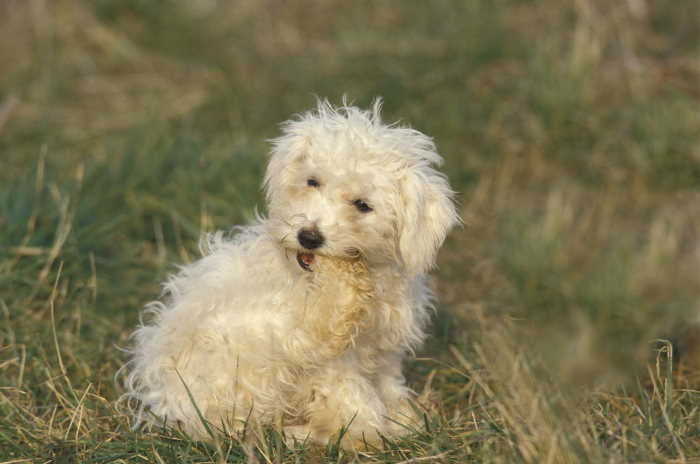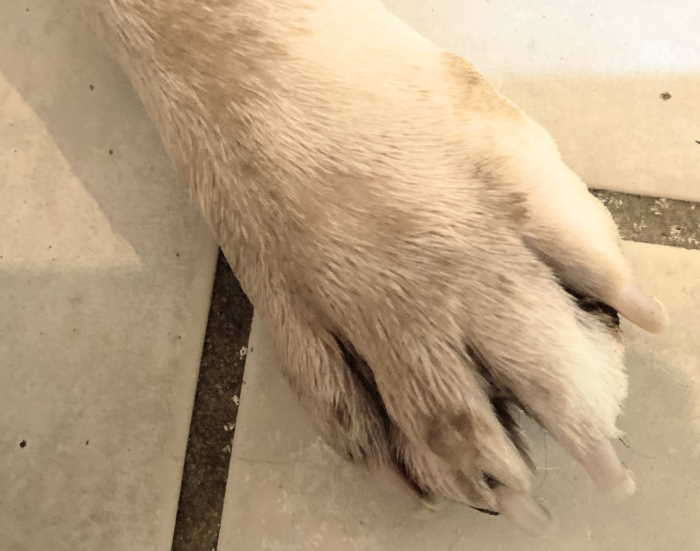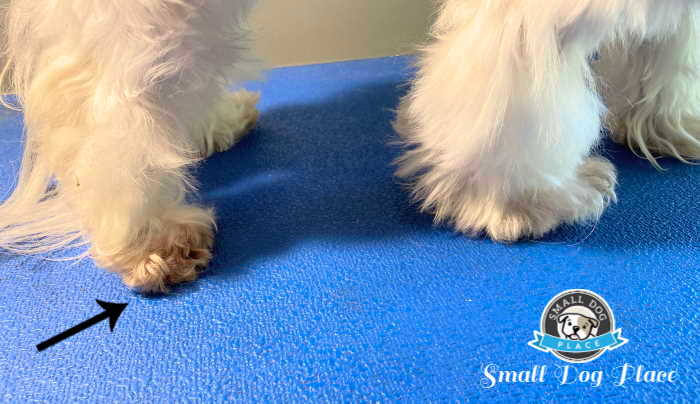-
Home
-
Small Dog Health
-
Yeast Infections in Dogs
›
›
Yeast Infections in Dogs by Lawrence McCabe |Published 06-17-2020 |Updated 11-22-2021
Among the most common questions that dog owners often ask is how to stop their pets from scratching all the time.
Since the skin of a dog are a general indication of the pet’s overall health, constant scratching, and itching is a tell-tale symptom that there is an underlying issue present.
It is important to find the source associated with the problem so you can treat the pet effectively, stop any future recurrences, and give the dog some relief.
 What You Should Know About Yeast Infections in Dogs
What You Should Know About Yeast Infections in DogsMany fungal infections arise from a yeast known as Malassezia. This is a natural yeast that contributes to the flora of the body in tiny amounts in the mucus membranes, skin, and ears of a dog.
When the body is in a state of balance, then everything is healthy. Yet when this type of yeast increases, it is often caused by overactive immune responses.
This creates an allergy directly related to the overuse of medications, antibiotics, vaccinations, harsh ingredients in a grooming product, chemicals and toxins in tick and flea treatments, commercial, low-quality dog food, and stress.
An overgrowth of the yeast known as Malassezia creates issues because it secretes toxins and enzymes that interfere with the immune system of the dog, overloads the liver, and also deposits these toxins into the tissues in the body.
The Immune System and Yeast
When a veterinarian treats a dog that presents with an allergy, they might prescribe a steroid that is designed to shut immune responses down. This may relieve the symptoms created by the allergy, but it is not a solution to what is causing the allergies.
When turning the immune system off in a dog with the use of medications, it is unable to balance and regulate healthy flora levels. This is when yeast blooms can occur.
When there is also a skin infection present that commonly occurs from bacteria that has entered the skin caused by excessive scratching, an antibiotic is usually prescribed.
The antibiotics then destroy all the bad and the good bacteria, eliminating the normal yeast levels, which makes the situation much worse.
So, a dog that has an under active or suppressed immune system will often suffer from yeast infections, along with pets that have allergies or an overactive immune system.
What Are the Symptoms of External Yeast Infections in Dogs?
 Yeasty Paws
Yeasty PawsThe symptoms associated with this infection are very easy to detect. These include:
- Licking and chewing the paws constantly or rubbing their behinds along the ground.
- Pungent or musty smelling ears or paws.
- Dark rusty colored hair between the nails and toes, and a rust color surrounding the genitals.
- Head shaking or scratching inside the ears (make sure the vet has ruled out ear mites).
- Seborrhea a condition that causes greasy and foul-smelling hair that results from a yeast infection present in the hair follicles. This condition also often includes dandruff.
- Hair loss on the upper back and tail.
- Black patches on the skin or black dots across the lower part of the belly.
- Recurring bacterial secondary infections.
- Joint pain and fatigue may also develop.
Breeds that are More Susceptible to Yeast Infections in Dogs
Here are a few small breed dogs that are the most susceptible to yeast infections:
How to Diagnose A Yeast Infection?
 Yeast infections in dogs are often accompanied by red staining on the hair.
Yeast infections in dogs are often accompanied by red staining on the hair.Yeast infections are commonly misdiagnosed. Certain vets might prescribe antihistamines, antibiotics, or steroids in order to treat yeast infections.
However, it is easy to find out whether the dog has a yeast infection by taking a sample from rubbing a moist Q-tip over the affected area or taking a skin scraping and then examining the sample using a microscope. Antibiotics do not affect yeast, so they will carry on multiplying, which will cause more yeast. This produces more toxins, which in turn continues to weaken the dog’s immune system.
How to Treat Yeast Infections in Dogs?
The initial step to treating an infection is to first determine the exact cause and to then remove it. Treating fungal infections over the long-term is the most successful once the cause is detected and then eliminated.
A nutritious and healthy diet is one of the keys to successfully eradicate yeast. If you want to give them an extra nutrition boost, then check out the best dog food for yeast infections.
Your dog should be on a diet that is species or breed appropriate and to avoid the low-grade commercial foods. It is also best to avoid sugars and carbohydrates in fruits and grains, including rice and potatoes, as these are the ingredients that feed the yeast, which encourages an overgrowth.
Sugar is one of the main contributors to a yeast infection, so feed your dog a low-glycemic diet.
Cleanse any yeasty parts on the body of the dog. Yeast thrives in dark, damp and moist areas like the genitals, between the paw pads, the creases of the groin, and the armpits.
Yeast in the ears should be cleansed gently with a natural and gentle solution. To soothe raw and itchy paws dipping each paw in a natural foot-soak is a more effective method than just wiping them down using a dampened cloth.
When you wash your dog, avoid oatmeal-based grooming products or shampoos, as this is one of the grains that provide the yeast with an active food source.
After bathing, the dog uses an anti-fungal and natural post-bath rinse similar to the one mentioned below to stop itching. Pour the solution over the body, making sure to not get the solution in the ears, over the head or face.
Natural Post-Bath Anti-Fungal Body Rinse
Mix 1 cup of organic APV (apple cider vinegar) into water (1 gallon) and pour the solution over the body as the rinsing solution. Avoid the ears, face, and head. Start from the neck pouring over the back, legs, and tail. Rub the solution into the skin gently and then pat the dog dry.
Stress in Dogs
 Stress can make yeast infections worse.
Stress can make yeast infections worse.Stress similarly affects humans and dogs. It results in creating an environment internally that supports imbalances. Some things events tend to cause stress in dogs:
- Vet visits
- Kenneling or boarding
- Home renovations
- Not enough exercise
- Taking a dog to a groomer
- Loud noises like thunder and fireworks
- Job loss
- Divorce
- Death
There are ways to reduce or manage stress. Make sure your dog is getting enough daily exercise. Also, provide a comfortable place for your dog to sleep and relax, locate a groomer for whom the dog likes, and give them regular affection and love.
Other ways to limit stress is to decrease the time they must spend in a crate and reduce the stress associated with vet visits.
Aromatherapy and massage can also be used successfully as a support system to reduce stress. Music may also reduce the stress associated with scary situations.
Try to avoid or limit any prescription medications that contain synthetic ingredients as this confuses the dog’s immune system and suppresses the natural healing capabilities of the dog.
Antibiotics and steroids encourage and promote yeast infections. Tick and flea treatments can also place stress on the immune system of the dog that can also lead to a yeast infection.
Last Words (Yeast Infections in Dogs)
All these things can become confusing if you are trying your best to do the right things for your pets. Consult with a holistic veterinarian to provide you with information on the different available options to use a more natural and safe health approach.
It is important to note that stopping medications abruptly could result in negative side effects. Check with your vet before you make a change to your pet’s current medication plan.
This information can assist you in offering your pet with a yeast-resisting and healthy lifestyle.
Lawrence McCabe has written about a wide range of sports and business topics on the web. He loves his dogs and wants to ensure they’re cared for in the best possible way.
Additional References
Malassezia
Did You Find, Yeast Infections in Dogs Helpful?
Does This Article Deserve Your Thumbs Up?
We always appreciate your support and encouragement. Your thumbs up means so much to us. Please like this article.
If you find this page or any page on Small Dog Place Helpful, or Useful in anyway, I’d love it if you would click the small heart found on the bottom right of each page.
You can also share or bookmark this page — just click on the:

Free Monthly Newsletter
Sign Up for Our Free Newsletter and get our Free Gift to You.
my E-book, The Top 10 Mistakes People Make When Choosing a Dog (and how to avoid them)


